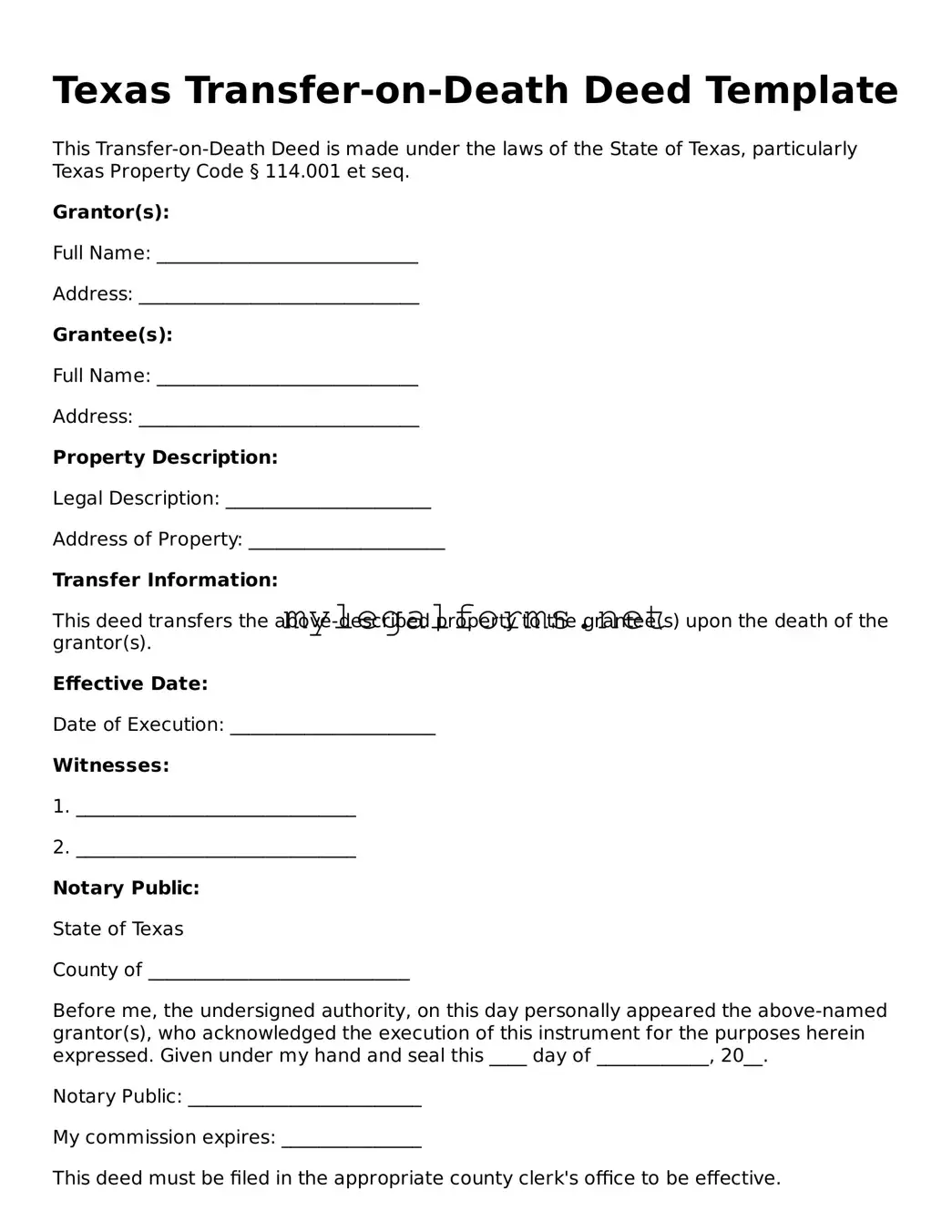Texas Transfer-on-Death Deed Template
This Transfer-on-Death Deed is made under the laws of the State of Texas, particularly Texas Property Code § 114.001 et seq.
Grantor(s):
Full Name: ____________________________
Address: ______________________________
Grantee(s):
Full Name: ____________________________
Address: ______________________________
Property Description:
Legal Description: ______________________
Address of Property: _____________________
Transfer Information:
This deed transfers the above-described property to the grantee(s) upon the death of the grantor(s).
Effective Date:
Date of Execution: ______________________
Witnesses:
1. ______________________________
2. ______________________________
Notary Public:
State of Texas
County of ____________________________
Before me, the undersigned authority, on this day personally appeared the above-named grantor(s), who acknowledged the execution of this instrument for the purposes herein expressed. Given under my hand and seal this ____ day of ____________, 20__.
Notary Public: _________________________
My commission expires: _______________
This deed must be filed in the appropriate county clerk's office to be effective.
